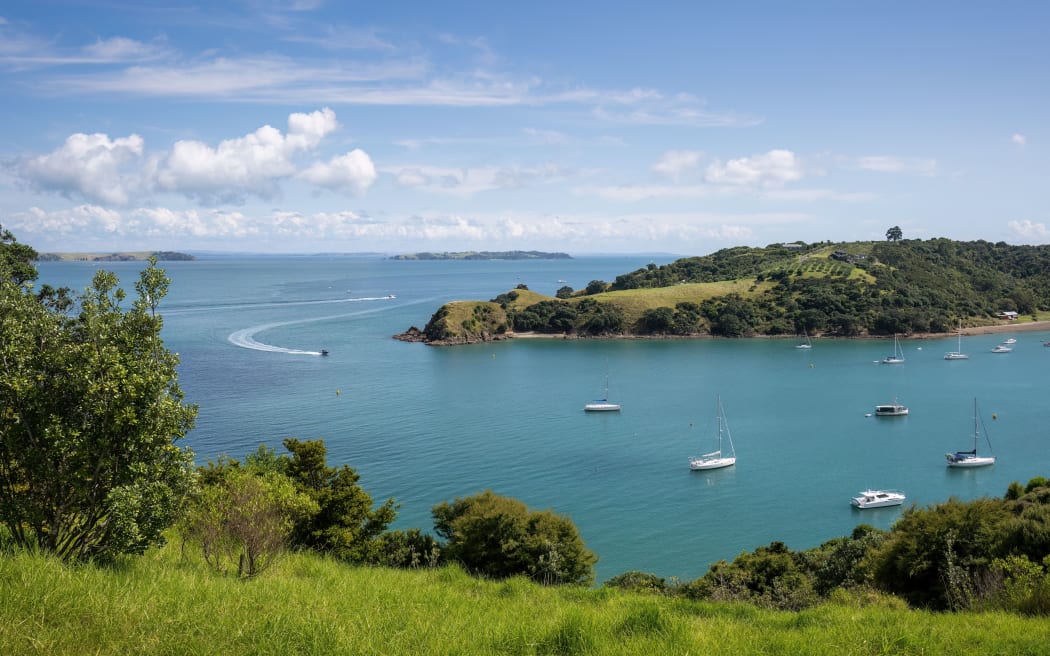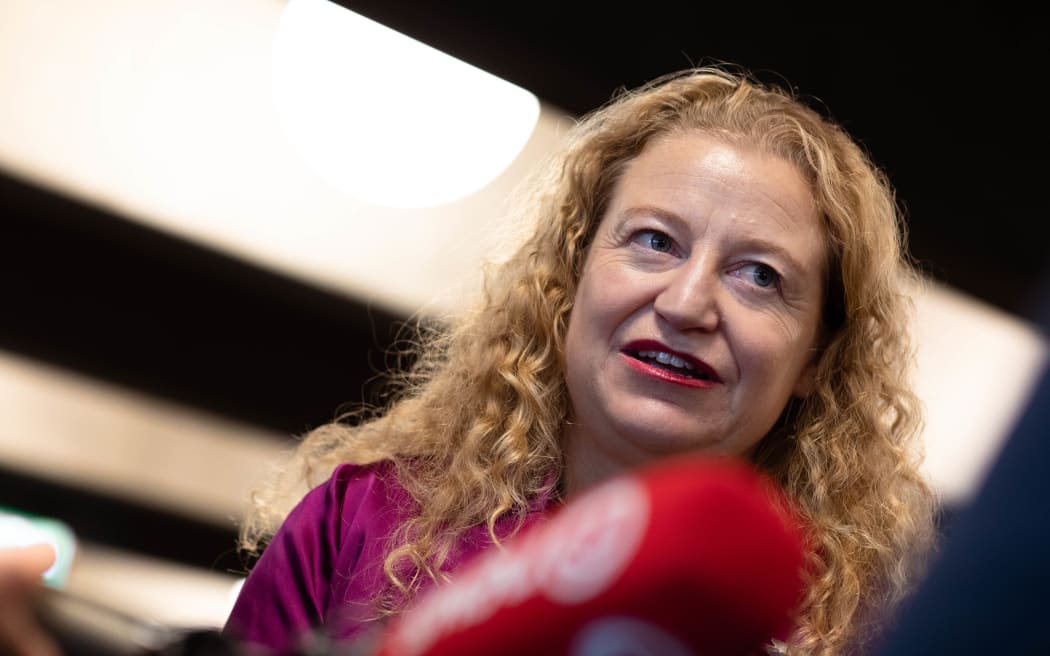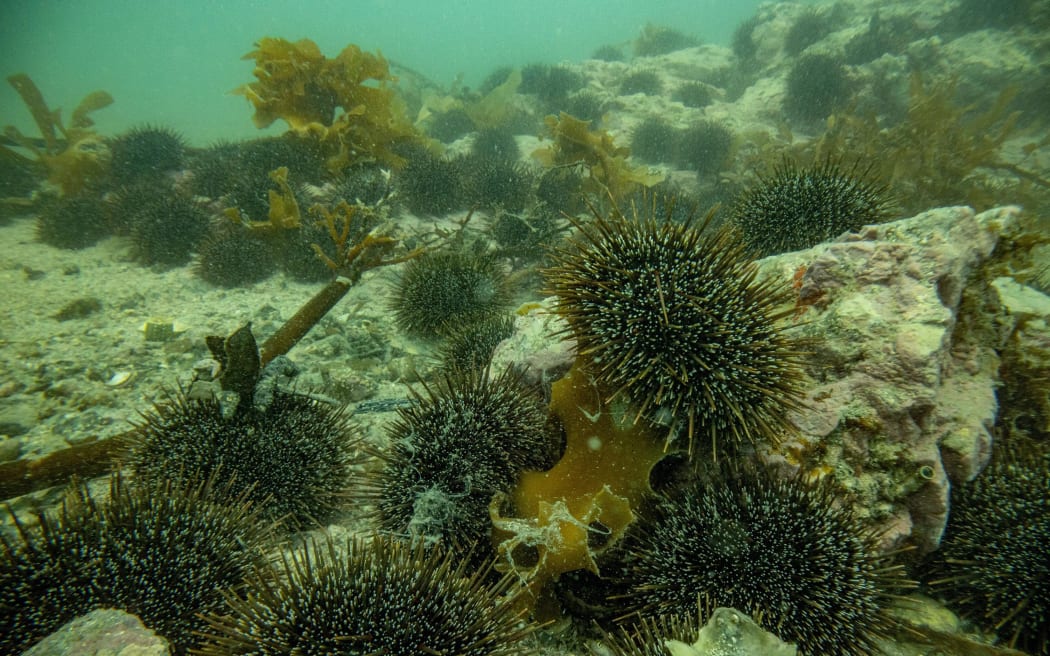
View of the Hauraki Gulf from Waiheke Island. Photo: 123RF
Bottom trawling would be banned in most of the Hauraki Gulf under proposals put forward by the Labour government.
It has four options for trawl corridors, or limited zones, where bottom trawling and Danish seining can occur.
However, Forest and Bird said there should be a fifth option for consultation - no bottom trawling at all.
At present, 27 percent of the Gulf is closed to trawling, while options being put out for public consultation on Tuesday would ban the practice from up to 89 percent of the waterway, Oceans and Fisheries Minister Rachel Brooking said.
Three weeks ago the government announced plans for 19 new protection areas for the Gulf, nearly tripling the area covered.
The plan prohibited trawling in five areas, and increased marine protections to cover 18 percent of the waterway, but was criticised by environmentalists for not going far enough to protect the marine park.
Brooking said the Hauraki Gulf Fisheries Plan had overturned the presumption that bottom-trawling and Danish seining could be used everywhere except in specified areas, she said.
"Instead, they will be banned everywhere except in very specific and limited places, called trawl corridors, or Bottom Fishing Access Zones."
Options being consulted on are:
- Danish seine fishing banned from 74.1 percent and trawl fishing banned from 77.1 percent of the Gulf shallower than 200m, with these fishing methods limited to 6 defined zones.
- Trawl and Danish seine fishing banned from 79.4 percent and trawl fishing banned from 82.4 percent of the Gulf shallower than 200m, and limit these fishing methods to 5 defined zones.
- Trawl and Danish seine fishing banned from 86.6 percent and trawl fishing banned from 88.5 percent of the Gulf shallower than 200m, and limit these fishing methods to 4 defined zones.
- Danish seine fishing banned from 87.3 percent and trawl fishing banned from 89 percent of the Gulf shallower than 200m, and limit these fishing methods to 4 defined zones.
"The consultation is going to go over the election period and into November and then it will be for the next Cabinet to decide on what option they want to do," Brooking said.

Oceans and Fisheries Minister Rachel Brooking. Photo: RNZ / Angus Dreaver
The government's Revitalising the Gulf strategy was to heavily restrict bottom trawling but not have an outright ban, Brooking told Morning Report.
"Part of that is we don't want the fishing effort to be displaced," she said.
There were concerns that boats would simply move to areas outside the marine park, especially Northland and the Bay of Plenty, putting extra pressure on the fisheries in those areas.
There were obviously concerns from the fishing industry about the impact of extending the areas covered by a ban, she said.
"But they also know it is is really important to do better in the Gulf, which is degraded and in the long term it will be better for fishing."
She said 67 percent of fish were caught through bottom trawling methods "which is obviously an important part of our economy".
Seafood New Zealand said moving the fishing effort outside the Gulf meant more fuel use and increased costs, so fish could become less accessible to New Zealanders.
"It could have other unintended consequences that don't actually help achieve a healthier Gulf," chief executive Dr Jeremy Helson said.
The industry wanted a stronger focus on the health of the Gulf generally, but the consultation process risked being ineffective if people did not understand how the fishing methods worked, he said.
Commercial fishing's carbon footprint was becoming lighter, most trawling was done over sandy, muddy surfaces in well-established fishing grounds. and fishers in the Gulf were already limiting their area to grounds where they have fished for many years.
"We manage to work within the considerable restrictions already in place on commercial fishing, to provide fish for Aucklanders and beyond.
"We are keen adopters of new technologies and that's why our fishing methods keep improving.
Improving the health of the waterway also needed to involve facing the impact of climate change, run-off from the land, risk from invasive pest species and the sheer volume of use by a growing population.

Seabed in the Hauraki Gulf. Photo: Supplied / Shaun Lee
Hauraki mayor and co-chairperson of the Hauraki Gulf Forum Toby Adams said it was "definitely a step in the right direction" but ultimately it would like to see a full ban.
"We've just got to get the health of the Gulf back to what it was and we don't need trawling in there.
"We know the damage that causes to the seabed."
The Gulf was a great asset to New Zealanders and an economic boost to the whole country and "we've been trashing it", he said.
WWF-New Zealand chief executive Dr Kayla Kingdon-Bebb supported an end to bottom trawling but said the proposal was a "decent step in the right direction".
"The seafloor, particularly around sensitive habitats like seamounts, has delicate and fragile ecosystems that take thousands of years to grow but only seconds to destroy. Bottom trawling is an indiscriminate fishing method that devastates everything in its path, and releases tonnes of carbon dioxide in the process," Kingdon-Bebb said.
"If this practice is to continue, these trawl corridors need to be as small as possible."
Call for complete ban
Forest and Bird was unhappy bottom trawling could continue in four areas as well as Danish seining in the inner Hauraki Gulf.
Its Hauraki Gulf coordinator Bianca Ranson said the government's approach was "unfathomable".
"There needs to be a fifth option in the consultation, an "option zero" - 100 percent no bottom trawling - which the public, alongside NGO's, iwi, and scientists, want. Bottom trawling, scallop dredging and Danish seining in the Gulf must end.
"Trawling through a marine park is like taking a bulldozer to land in a national park. Large, weighted nets and doors scrape across the seafloor to scoop up anything in its path, leaving damaged, scarce habitats unable to support abundant life."
Ranson said it was a destructive fishing method and had no place in the gulf.




